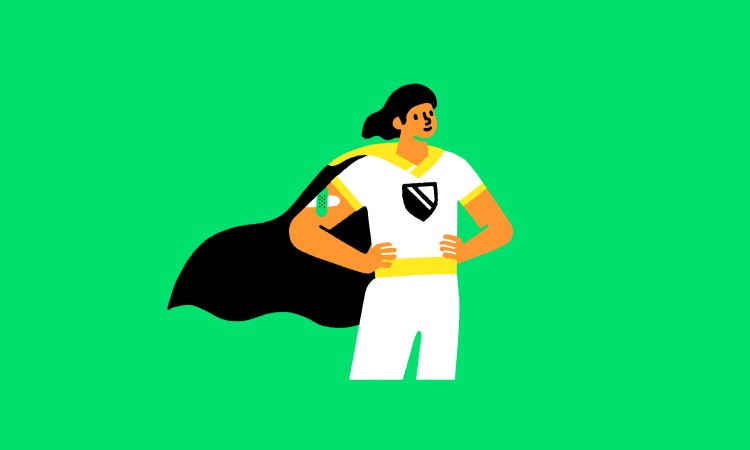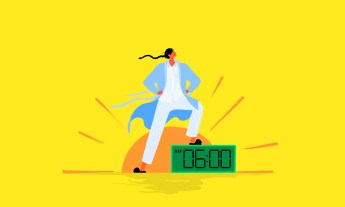
It’s no fun having a needle stuck into your arm. But remember: You’re not just getting a flu shot for yourself — you’re protecting your family, friends, coworkers and community, too.
This post is part of TED’s “How to Be a Better Human” series, each of which contains a piece of helpful advice from people in the TED community; browse through all the posts here.
It’s flu season again. Have you gotten your flu shot? Are you wondering whether you really need one? After all, you haven’t come down with the flu in years. Or, are you trying to convince someone else to get theirs?
The flu — short for influenza — remains a highly dangerous disease. Yes, huge strides have been made since the outbreak of the Spanish flu in 1918, which killed tens of millions of people worldwide. (Watch TED-Ed’s “Lessons on the 1918 flu” to find out more.) But there are still up to 5 million severe cases of the flu every year, resulting in hundreds of thousands of deaths.
Why hasn’t the flu been eradicated? “First, there are more than 100 subtypes of the influenza virus, and the ones in circulation change from season to season,” explains physician and educator Melvin Sanicas in a TED-Ed lesson. “And second, the flu’s genetic code allows it to mutate more quickly than many other viruses.”
Here are some of the most common myths about the flu shot — along with a dose of the truth.
Myth #1: Getting a flu shot will give you the flu.
Let’s get it straight: The flu shot will not give you the flu. It contains a deactivated form of the virus, which teaches your body to recognize a real flu virus and respond. Your body should develop the necessary antibodies to the flu within about two weeks of receiving a shot. “You might feel tired and achy after getting it, but that’s not an infection,” says Sanicas. “It’s your normal immune response to the vaccine.”
While some of the other vaccines you get do contain a weakened, live version of the virus they’re protecting you against — such as measles or chickenpox — the flu shot does not have a live virus. Which points to another reason why you need to get a flu shot every year. While just one or two doses of a live vaccine is enough to provide immunity to, say, chickenpox for your entire life, an inactive vaccine like the flu needs to be topped up regularly to maintain your immunity.
Myth #2: At any one time, there are so many different strains of the flu around. A flu shot can’t protect you against all of them — so why bother?
Yes, the flu virus is constantly changing, and that’s why a new flu vaccine is designed by the World Health Organization every year to combat the strains of flu that are predicted to be most prevalent that season. Fun fact: Scientists meet in February to figure out the “recipe” for the flu shot for the northern hemisphere; the southern hemisphere’s “recipe” is determined in September.
For people under 65, you’ll likely be vaccinated against four different kinds of flu (note to the needle-shy: it’s all in one shot — not four jabs). “Even when flu strains mutate further, the vaccine is often close enough that a vaccinated person who catches the flu anyway will have a milder and shorter illness than they would otherwise,” says Sanicas.
Myth #3: The flu shot isn’t needed if a person is young and healthy — it’s intended only for the old and/or sick.
Even if you’re in the prime of life and health, it’s possible to get the flu — especially if your immune system becomes weakened by another illness you catch or by your not getting enough sleep.
There’s another vital reason why the flu shot needs to be distributed as widely as possible, especially in cities: herd immunity. “People who are vaccinated are not only protecting themselves, but by blocking the dissemination of the disease within the community, they are indirectly protecting the people in this community who are not vaccinated,” Buenos Aires-based medical investigator Romina Libster explains in a TEDxRiodelaPlata Talk. “They create a kind of protective shield which prevents them from coming in contact with the disease. This indirect protection that the unvaccinated people within a community receive simply by being surrounded by vaccinated people, is called herd immunity.”
She adds, “Many people in the community depend almost exclusively on this herd immunity to be protected against disease. The unvaccinated people you see in infographics are not just hypothetical. Those people are our nieces and nephews, our children, who may be too young to receive their first shots. [Editor’s note: Six months of age is when most babies should start getting them.] They are our parents, our siblings, our acquaintances, who may have a disease or take medication that lowers their defenses. There are also people who are allergic to a particular vaccine. They could even be among any of us who got vaccinated but the vaccine didn’t produce the expected effect, because not all vaccines are always 100 percent effective.”
For herd immunity to work, a large percentage of the population needs to be vaccinated — this is called the threshold. Once vaccination levels drop below the threshold, the disease can spread more easily and that’s when outbreaks of diseases that were previously controlled — such as this year’s worldwide resurgence of measles — will emerge.
If you don’t receive a flu shot and you’re in good health, you may be lucky and avoid getting the flu. However, even if you don’t get sick, you may still be infected by it and spread it to others — a friend who has asthma or diabetes (the US CDC has a long list of those at high risk for flu complications), an immunosuppressed colleague, a newborn or someone else in a high-risk group. The potential complications for people in these categories can be severe, even fatal.
Myth #4: People in the high-risk groups mentioned above should not get flu shots.
Wrong. Pregnant women and many people with chronic health conditions can still get a flu shot, and it’s a good idea for them to do so, given the risks they face if they get the flu. The flu shot has been carefully designed so that it’s safe for as wide a range of people as possible.
If you’re not sure about whether you should get the shot or not, speak to a doctor or a trusted health professional. A small number of people may be allergic to the ingredients in the flu vaccine, but your doctor should be able to advise you based on your medical history.
For those who can’t get a flu shot, herd immunity is vital so it’s up to everyone else to get theirs. No matter how healthy you feel, you can still make someone else dangerously sick.
Watch this TED-Ed lesson on why you need to get a flu shot every year:
https://ed.ted.com/lessons/why-do-you-need-to-get-a-flu-shot-every-year-melvin-sanicas
Watch this TEDxRiodelaPlata Talk on herd immunity:



















